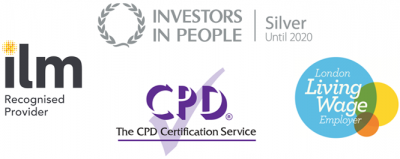Nov
12
2015
How to choose the right method for communicating with staff
By Jakki Bendell.
The medium you choose to convey your message is as important as the message itself. Marshall McLuhan famously coined the phrase ‘The medium is the message’ in 1964. And it is as true today, with the huge number of new tools and mediums available, including email, video conferencing and social media.
So how do you choose the right medium to communicate in the workplace?
Consider the message
A useful way to think about different communication methods is richness.
For example, a letter relies on words to convey a message. It is lean in terms of the information it conveys per word. On the other end of the richness scale is a face-to-face meeting, which includes visual cues such as body language, and auditory cues, like the volume, pitch and pace of your voice.
In general, richer communication methods are better for messages that have the potential to be misunderstood than leaner ones. These include sensitive messages, bad news, disagreements and where you want to build relationships.
If the message is simple and routine, such as setting the date and time of a meeting, using a lean medium such as an email or even a text is usually fine.
For a more complex or personal interaction, like giving feedback to a team member, a face-to-face meeting is more appropriate.
New media have blurred some of the boundaries to some extent. But all else being equal, a telephone call is richer than an email. A video conference is richer than an audio-only conference call. And it’s still a bad idea to end a relationship by text.
Think about the audience
Of course, it’s not always as simple as choosing the richest medium. Another major factor is your audience. Questions to consider are:
- Who will the message affect? How many people?
- What is their preferred medium for this kind of message?
- How will they use the information?
- Should it go to all the audience at once, or cascade through the organisation?
- How important is the consistency of the message?
For example, a written message may work best for something factual that the whole team needs to know, such as a policy change or notes from a team meeting. This ensures they all have the same message at the same time that they can also refer back to.
And if you’re inviting a keynote speaker to a conference, they may expect it to come via a formal letter.
The important thing is to consider the audience and the options before you act. It may be useful to think in terms of PEP: Paper? Electronic? Or Personal?
Organisational culture
Organisational culture should also play a part in your choice of communication channels. Is your organisation more formal or informal?
Formal, hierarchical organisations often prefer formal communications, such as structured presentations. Flatter, less formal organisations may be more used to informal meetings and messaging.
It may be useful to experiment, but don’t forget to choose at least one channel that is consistent with the company culture or you risk your message being lost completely.
Consider feedback
Whatever method you choose, make sure your message has been successful by getting feedback. If there is confusion, you may need to adjust the medium, the message, or both.
To find out more about how to use different communication methods effectively, check out our Communication in the Workplace course.
Jakki Bendell has over ten years' experience as a consultant, trainer and coach specialising in business writing skills. As a practising professional writer, Jakki draws on a wealth of stories and personal experience to illustrate her courses.


